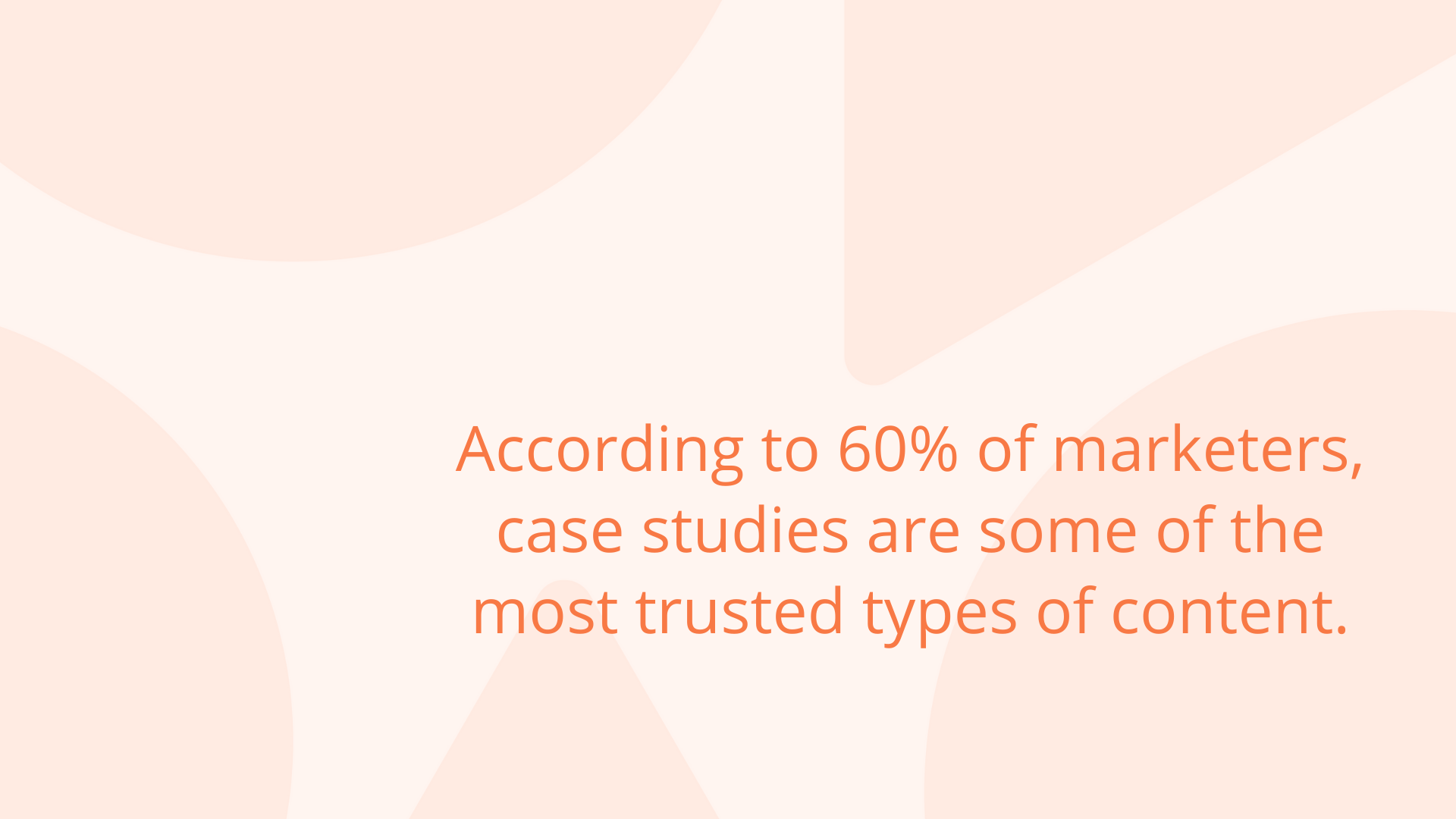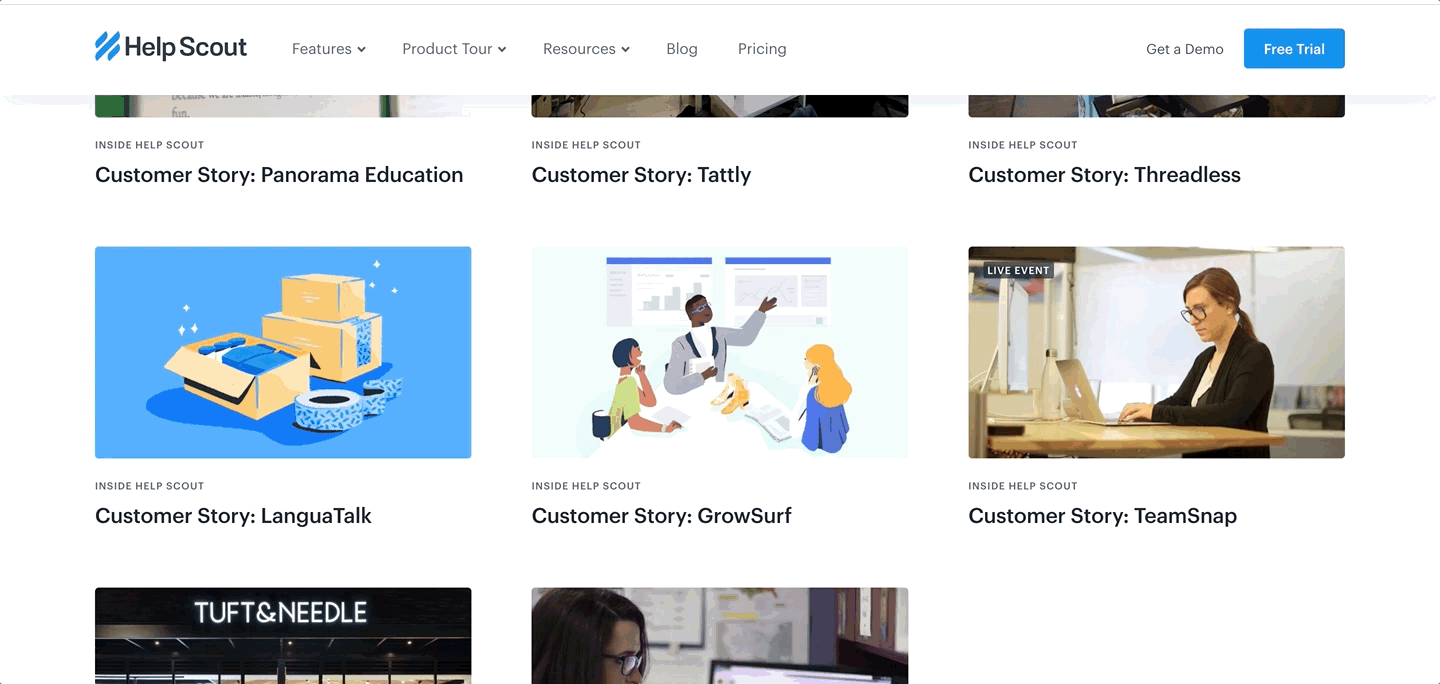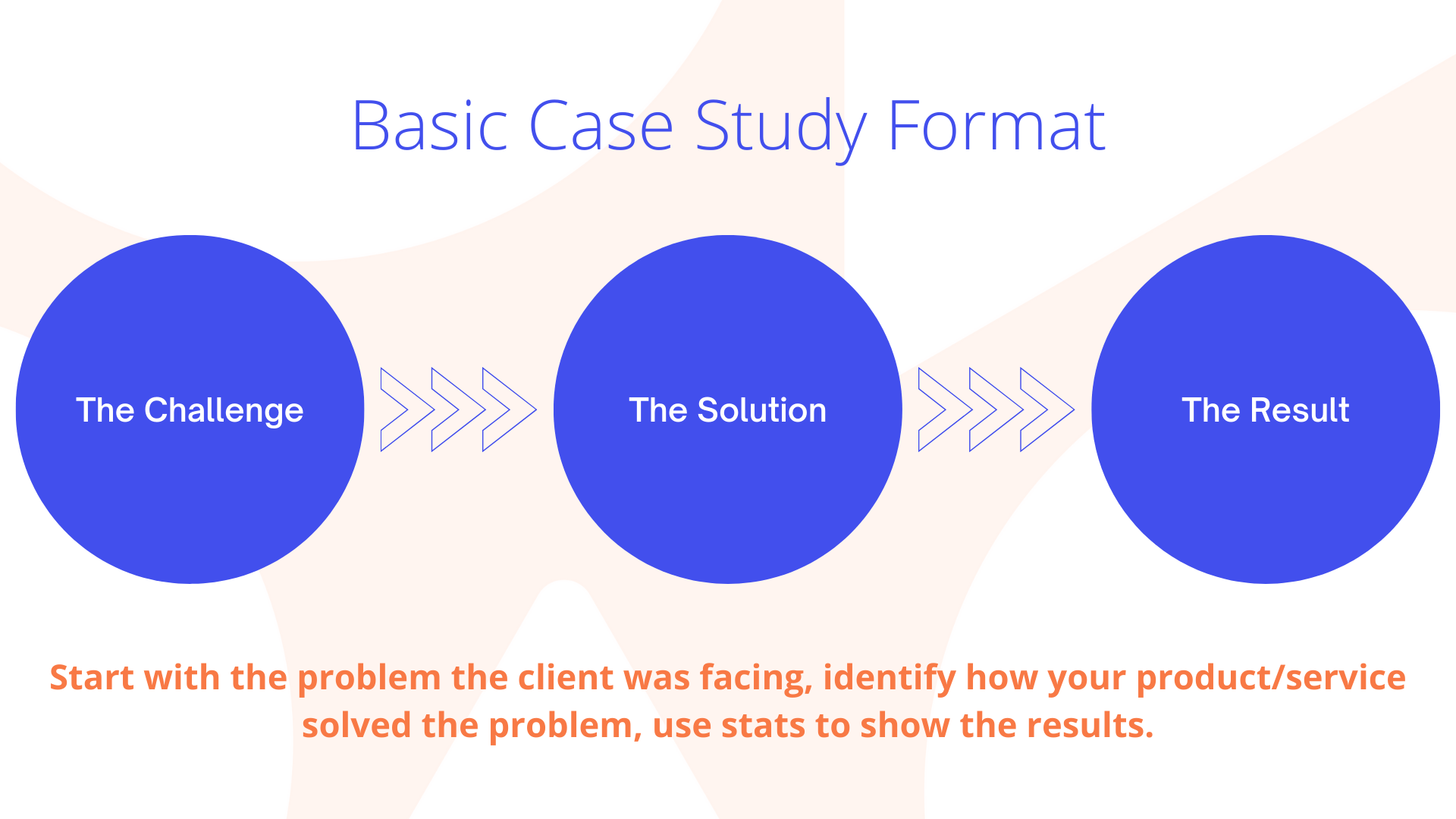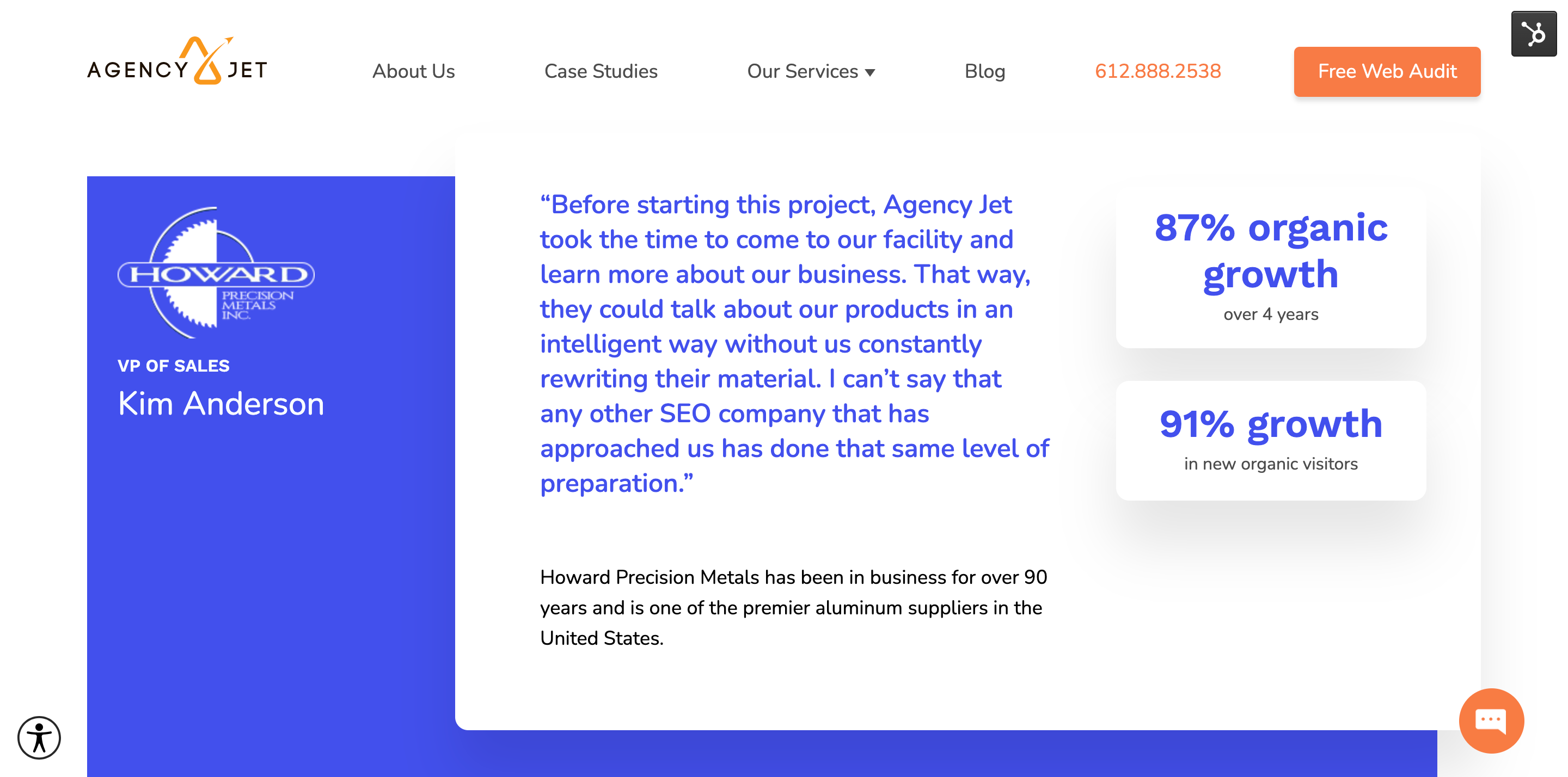How To Write a Better Small Business Case Study
.png)
For a regular person, “case study” may sound hard or intimidating, even something that you may think is time-consuming and something that you’re better off not having.
This could not be further from the truth — today, 90% of consumers use the internet to look for local businesses, while 82% will read reviews online before making a purchase. Moreover, 62.6% of respondents on an eMarketer survey say that case studies work well when generating leads.

Fortunately, case study content isn't too hard to create, so you can get the best marketing material without having to do much research.
In this blog post, we provide step-by-step instructions on how to write a business case study, making it easier than ever for small businesses.
Read on below to get a handful of techniques that will help you leverage a marketing case study to generate more leads and sales.
What is a Case Study and Why is it Important?
A case study is a document that provides an outline of how your customer has used your product to solve a particular problem. It confirms that your product works and serves as proof of its results.
If your services or products have helped customers achieve great results, then a case study is the perfect way to showcase it.
Because case studies don’t sound as good as a blog post gone viral, they are often overlooked for other kinds of content formats. However, effective case studies provide an excellent way to attract more business and could be the difference between good results at the end of the quarter or a lost opportunity.
There are a few reasons why customer success stories should be part of your marketing strategy:
- Assists in sales: By having case studies on your website, your sales team can share them with potential customers. This will help to build up confidence in you and your brand.
- Makes loyal customers: Small business case studies provide you with the opportunity to engage with your satisfied customers and allow you to reaffirm why they should always choose you.
- It builds trust: They can turn your prospective customers’ love for your brand into tangible data which can prove your value. According to 60% of marketers, case studies are some of the most trusted types of content.
- Multi-purpose content: Both data snippets and quotes from case studies can be used as powerful tools for your website, landing pages, and more. They can also be used in videos, PDFs, infographics, and blog posts.

1. Always Use the Business Name (If You Can)
Never underestimate the power of your business name — it can help to communicate your business strategy. Take the following as examples:
- A dance club’s name will often communicate how it’s a place for fun, enjoyment, and pleasure.
- A bank’s name will want to communicate how it provides an environment of prudence and conservatism.
In both examples, a business name can help to reinforce the company’s values. Imagine the names “State Trust Club for Dancing” or the “Midnight Craze Bank” — they probably won’t attract the kind of customers you’re looking for.
Moreover, companies who fail to use their actual business names when creating case study formats show that they don’t honestly believe in the services or products provided to them.
Another reason why they might not choose to use their business name is that they could be worried about pricing from competitors. However, if they provide a company name along with a contact person, it shows confidence in the work you’ve done for them.
With a name and a contact person, they’re telling you that they are confident in your work and that they are invested in the relationship. Moreover, the name of a business can provide first-time customers with an idea of what your business is about.
At the very least, including the business name in the case study will give customers some background on the business you’re talking about.
2. Use a Direct Quote from the POC of the Case Studied Company
While having hard data to display is good, nothing can beat the honesty and credibility that a customer quote can provide.
Getting a direct quote from a previous customer is an excellent piece of social proof that adds a human touch to the case study template. It also makes your results more believable — as a storyteller, it’s part of your job to create a compelling narrative on how your client achieved their goals using your products or services.
Quotes work on a deeper level compared to data because it lets your customers tell the story in their own words, which you can then inject into the narrative you’re building.
As such, you can use quotes to increase your case study’s credibility, break up large chunks of text, and allow your target audience to understand and relate to you. To make things even more interesting, you can opt for an interview-style format as well as use annotations and paraphrasing to ensure that your text isn’t repetitive.
Be sure to use as many quotes as possible to tell the various stories of your previous clients and display them throughout your website — this will do the work for you and attract potential clients.
Furthermore, customer quotes can be used outside of testimonials and can be displayed on landing pages, welcome emails, and even email marketing campaigns. Doing this will encourage more people to look up your products and make online purchases.
Here's and example of a happy Agency Jet client, with their quote front and center on their case study.
3. Use Media Where Possible
No one would ever want to read a chunky-looking case study, even if it was the most informative and interesting one in existence.
Just like blog posts, a compelling case study needs to be easy to read and scannable. As such, the best-looking case studies will have screenshots of data and analytics, will incorporate video, and use headshots of people who provide quotes.
When creating a case study, remember to use various kinds of media, including video case studies and infographics to entice readers and stir their interests. It will also help to use the proper formatting elements that you would for blog posts, articles, and copywriting, such as:
- Headers
- Bulleted lists
- Images
- Italicized or bold text
- And more
The use of multimedia features to support your written content will help to make a more engaging and visual case study. At the same time, pictures of your actual customers, statistical results, as well as video interviews will help you make the entire case study stronger when future customers view it.
Apart from giving your case study great SEO value, using a wide range of media and the correct formatting elements will help your readers find the most essential parts and allow them to understand the value you bring.

4. Clearly State the Pain Point/Goals of the Customer
Because every service or product is made to be the solution to a problem, this is the part where you need to explain why the customer worked with you, to begin with. This will allow you to leverage this in two ways:
- You’ll be able to identify what you do through their lens
- You’ll automatically speak to a potential customer who is in the same position
Be sure to explain the problem(s) that you were able to help the customer overcome. Discuss the impact that their problems brought — perhaps their customers were leaving. Maybe they always get bad leads, or maybe good leads that never amount to anything.
This case study structure is a great opportunity to show your readers what’s at stake — so be sure to leave jargon out and be as clear as possible. It’s best to frame the problem so that any reader can make sense of it. However, you also need to remember that you need context to tell a compelling story, which will also help match their needs to your solution.

To help you determine this, there are a few questions that you can ask them, such as:
- How many employees work in your company?
- How long has your company been in business?
- What are your company’s goals at this time?
- What are your company’s struggles?
- What has led you to look for a solution?
- What could have happened if you didn’t find a solution to your problems?
- Did you look for other solutions before us that didn’t work as planned? If so, what didn’t work for you?
Getting a real and visceral customer story through these pain points will help prospects relate to these initial challenges and know that you've solved these sorts of problems before.
5. Explain How your Services Solved their Problem
In this section of the case study, you will need to transition from your customer’s business to your business.
Ensure that you provide a direct and concise explanation of the customer's problem and how your products and services solved their needs. Then swiftly move on to the results and key takeaways that your customer was able to achieve using your service or products.
Now is the time when you need to talk about how the problem was solved — be descriptive but also add hard data and real-world examples to back up your claims.

While not every solution can be made tangible or measured in numbers, be sure to provide evidence of your success through statistics whenever possible. If nothing else, this can easily sway a prospect who is looking to buy or may already be contemplating purchasing your product.
It will also help to show your math — the steps you took to get results are just as critical as the actual results.
Don’t forget to explain what you did to provide your client with the results they were after. Doing this won’t just validate your claims, but giving the entire story will also make it easier for your readers to envision how you can fulfill their needs too.
6. Put Data Points All Over the Place
You’ve now reached the final part of your sales pitch, so be as clear and concise as possible. Tell your readers about how you were able to nail the whole experience for your previous client.
If you’ve ever read a business case study analysis that said they were able to “double or triple traffic”, you’re probably wondering what the actual numbers are.
Make your business case study format stronger by providing clear and direct numbers. Share the exact numbers that you were able to produce — whether it’s an increase in revenue, traffic, or any other goals that mattered to your client. This will make your case study even more believable while building a strong foundation of trust for your brand.
Unfortunately, not everyone will be as familiar with analytics as you are, so you’ll want to emphasize the most important points of data while providing context on why it matters.
A few things that you can use to provide real proof of your success are the following:
- Graphs
- Charts
- Statistics
- Analytics data
- White papers
- The project board
- And more
When your audience reads this, they will be excited with the prospect of getting the same success from you. Furthermore, the reader will be able to understand where your previous customer came from and where they are now through your help.
Finally, seeing hard proof of your results will help potential clients see exactly how you can help them, making your case all the more powerful.
7. Put Snippets of these Case Studies all Over Your Site
Once you’re done and are happy with your business case study template and design, it’s time to gather the different results and quotes that you can make use of.
This includes quotes from your product pages, which can be especially useful. If you see that visitors to your website are reading your product pages, this means that they’re considering making a purchase.
It’s also safe to assume that they’re actively looking through your products, likely with the intention to buy from you.
Strategically placing snippets of your case studies throughout your pages may just be the final push you need to take your potential customer over the line and into the final stages of your sales funnel.
These snippets will need to be results-based and can be placed in various places, such as:
- Your blog posts
- Your homepage
- Direct quotes from clients should be used throughout your site
- Have a brief snapshot of your case study on your key services page
You can also use multi-purpose content in this section, such as data snippets and quotes from your case studies. You can use repurposed bits and pieces of your case studies and turn them into videos, PDFs, infographics, and blog posts.
A great example of this can be found here.
8. Post About the Case Study Off of Your Website
There’s no point in creating an epic case study if no one will ever get to read them — which is why you need to ensure that it’s organized and can be easily found.
How do you do this, you ask?
- Listing them on your website
- Promoting them through social media and email
- Optimizing them for search
- Creating press releases
- Giving them to your sales staff for leverage
Below are a few examples that will provide you with an idea of how you can make your well-written case study easy to find.
Drupal
Drupal has got the formula right from the start — users who wish to see their solution don’t need to look far to see just how many brands have already found success through them.
They figured out that you need to give your website visitors all the chances to come across evidence of all their happy customers. The best place to do this is through your home page; here are a few ways for you to display your case studies on your homepage:
- A call-to-action (CTA) that leads to your case study
- A slide-in CTA that links to your case study page
- A CTA where you can view a few case studies
- Through customer testimonials and quotes
Amazon Web Services
Amazon also realized the power that case studies can offer, so they use it right on their homepage. They’ve also made it very easy to search for any industry-specific case studies in various categories which includes:
- Fitness
- Financial services
- Manufacturing
- And more
Empower Your Webpage with Case Studies
An in-depth case study is a vital part of any company website and is a marketing tool that is a must if you’re looking to put your brand’s best foot forward.
However, prospects will never get to see your epic case study if your site isn’t readily available on Google. This is where Las Vegas SEO services come in.
Our team of experts can help you create a presence that everyone will notice, no matter where you are.
We’re here to ensure that your small business will have a dedicated and honest partner in digital marketing. But if you're not completely ready to invest in high-quality SEO, you can get a free and educational evaluation of your website via our website audit.
Conclusion
When you put to use the various tips provided above, you won’t just create effective business case studies, you’ll also provide your customer case studies with more visibility around the web and throughout your website. This will translate to passive sales, while you let your happy customers’ positive experiences do the work for you.
